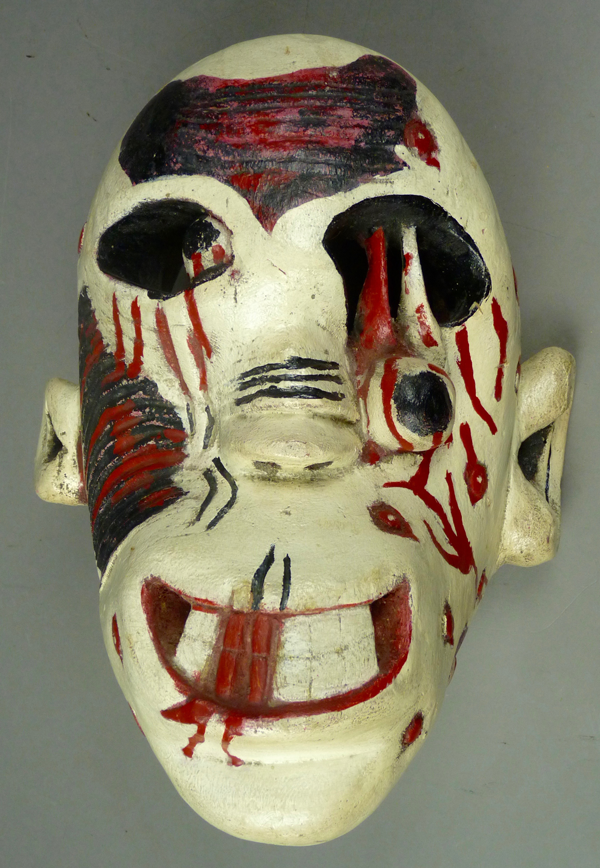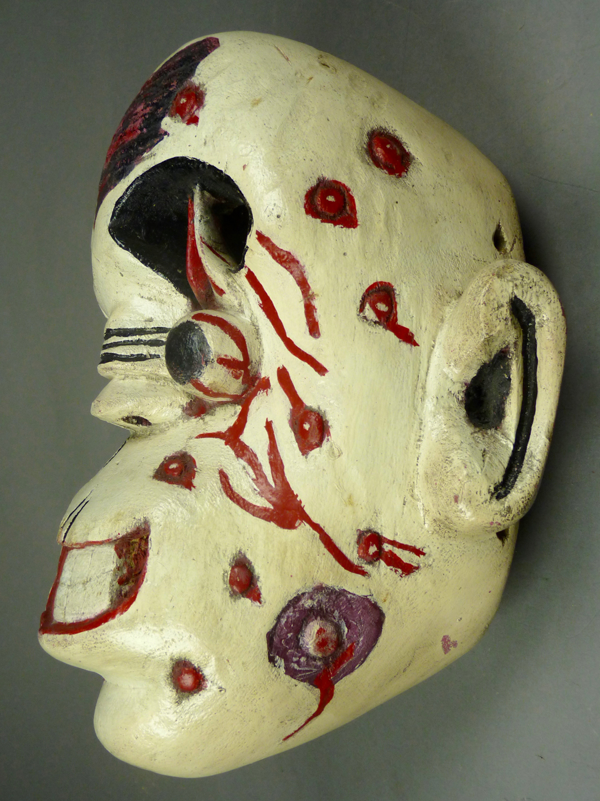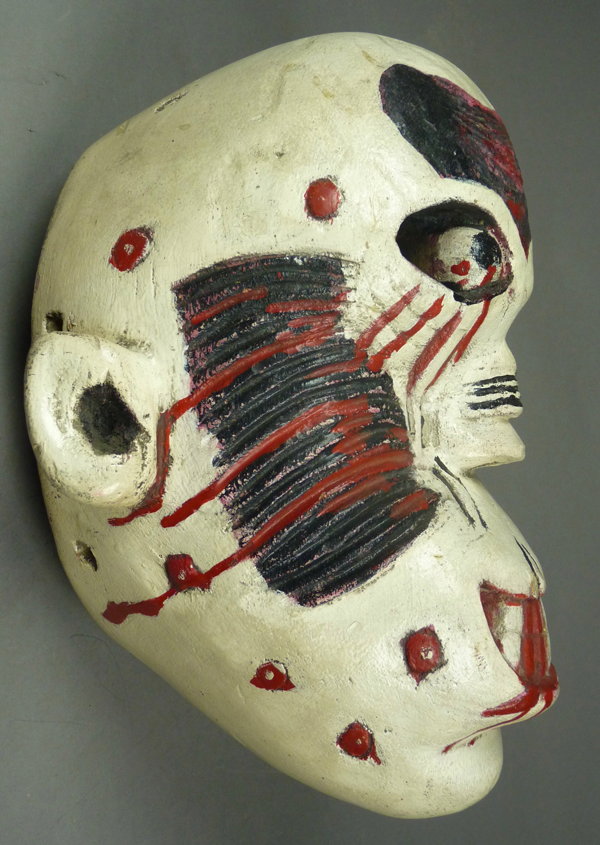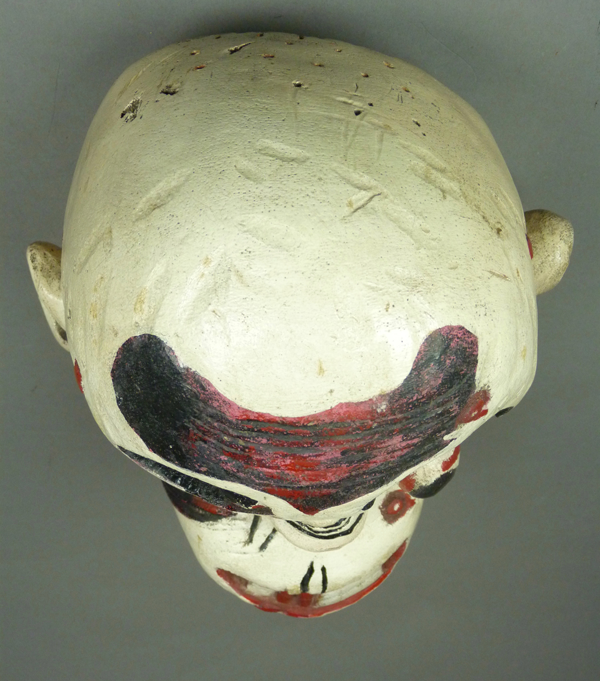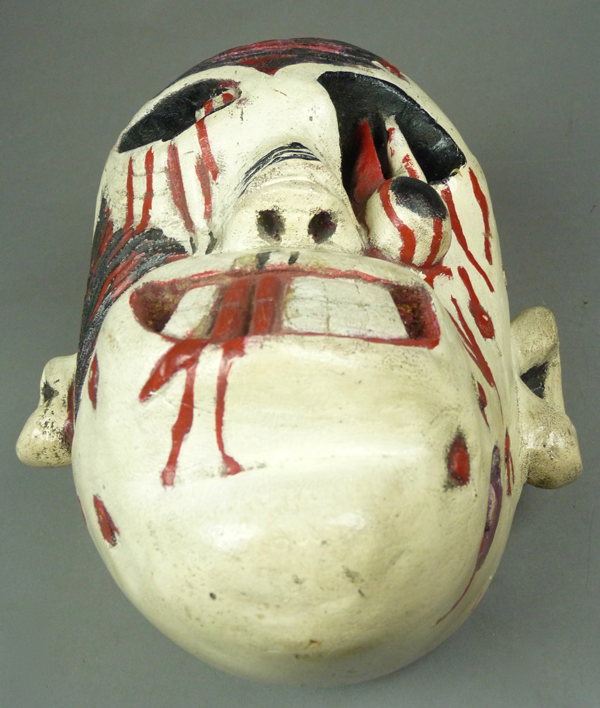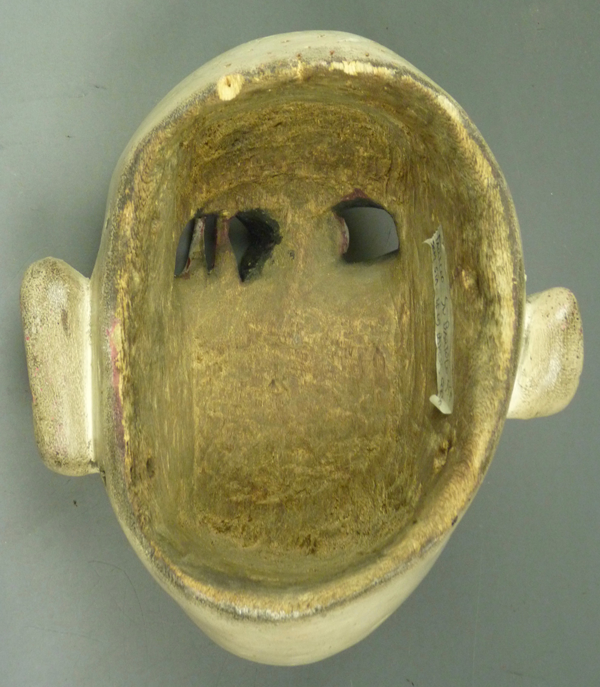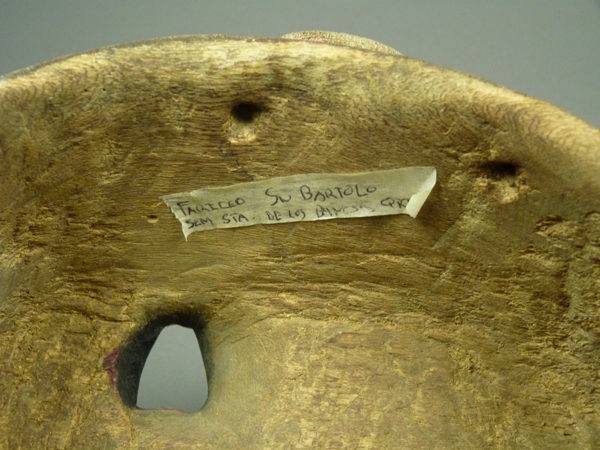On March 2, 2015, I discussed masks used during Semana Santa (Holy Week) in the Mexican States of Guanajuato, Jalisco, and Queretero. There I explained that the characters who threaten Christ in these passion plays can go by a number of different names, including Fariseos, Judios, Judas dancers, Centurions, Robenos (Romans), and Soldados. In Queretero they are called Fariseos. Here is the link to that blog entry.
https://mexicandancemasks.com/?p=2398
Years later I realized that I had overlooked a remarkable Fariseo mask from San Bartolomé Aguas Calientes (or San Bartolo de los Baños), Queretero, a small town near the Queretero/Ganajuato border (in this case, baños refers to natural hot springs—baths). I will feature the omitted mask in this week’s post. I bought this one from Jaled Muyaes and Estela Ogazón in August, 2007; I believe that it was probably made in the 1970s and that they collected it in the 1980s. In the United States, we would call this a ghoul mask. I will remind you again, given the extreme drama of this mask, that the wearers of the Fariseo masks are devout Christians. who portray grotesque evil doers to dramatize Christ’s triumphal ascent.
On a scale for grotesque and repulsive, this mask is over the top. For example, one eyeball is dangling from its socket.
The two ears are not at all similar.
The face bears wounds and rashes, as if this was a man who died after illness and injury.
Large wounded masks like this one also appear during Semana Santa fiestas in San Luis Potosí. Recently, of course, such imagery has become a feature of American horror films about the unquiet dead, or “undead.”
This mask is 13 inches tall, 9 inches wide, and 6½ inches deep.
The back demonstrates differential staining. That is, the inside of the rim is darkly stained while the flat back is more lightly stained.
This is an old and heavily used mask, but it lacks a black number on the back that would mark it as having been in the 1981 show of Jaled and Estela’s masks in Mexico City. That is why I think they got it a little later.
When the mask was collected in the field, the provenance was recorded on a piece of masking tape—
“Fariceo, Semana Santa, San Bartolo de los Baños, Queretero (QTO).
Next week I will share an old Rio Mayo Pascola mask that recently arrived, and also I will invite a new level of participation by viewers.
Bryan Stevens

